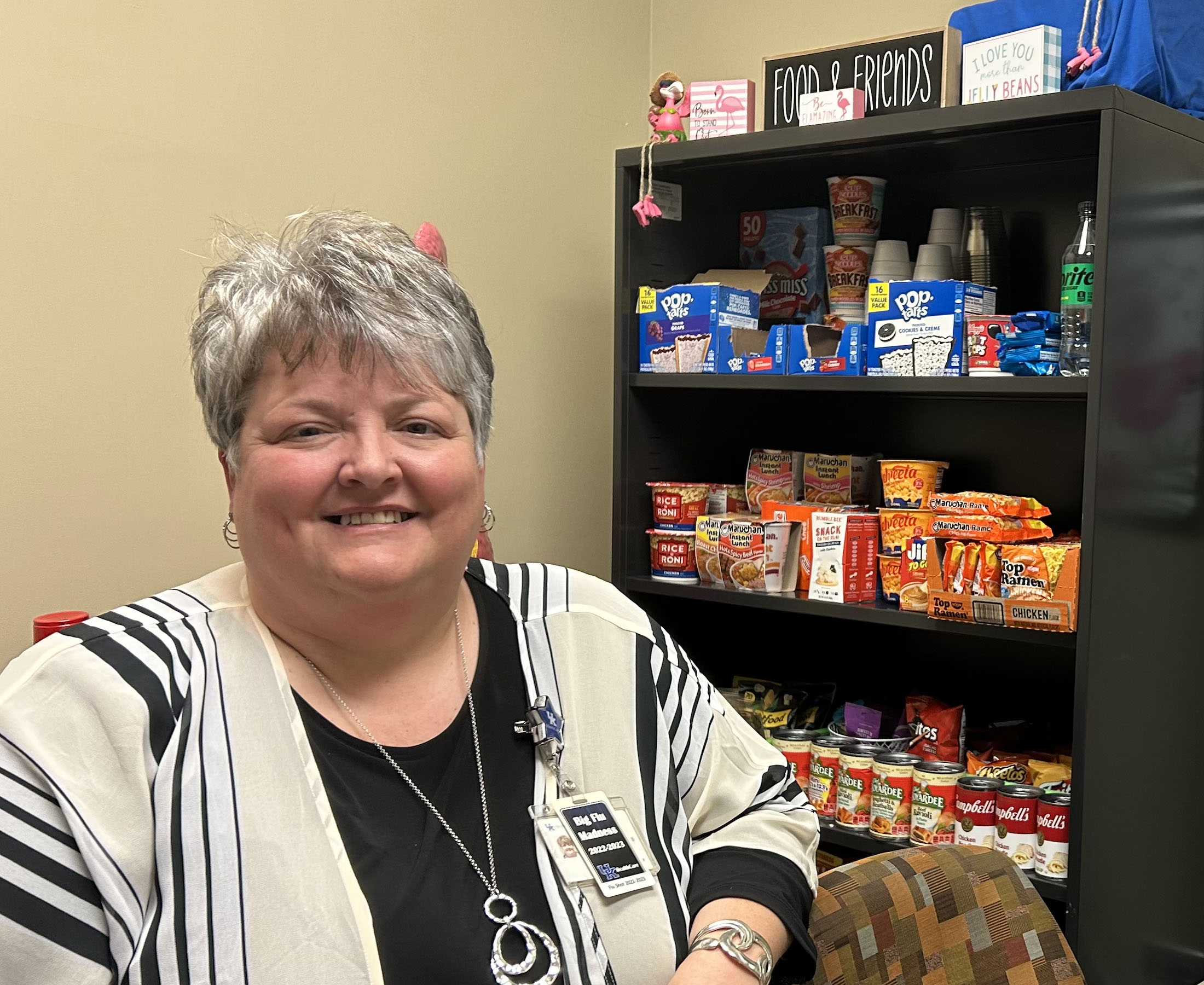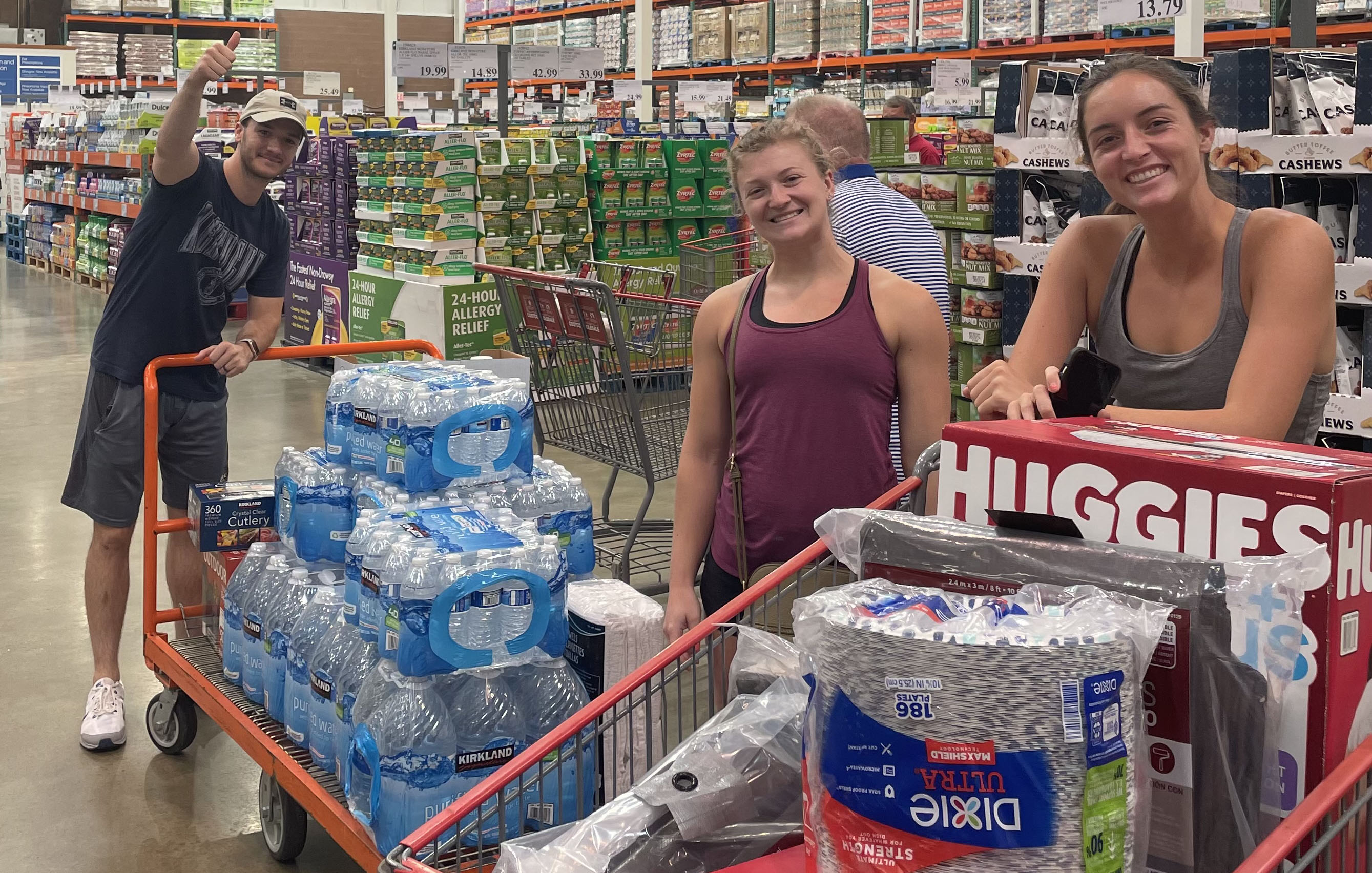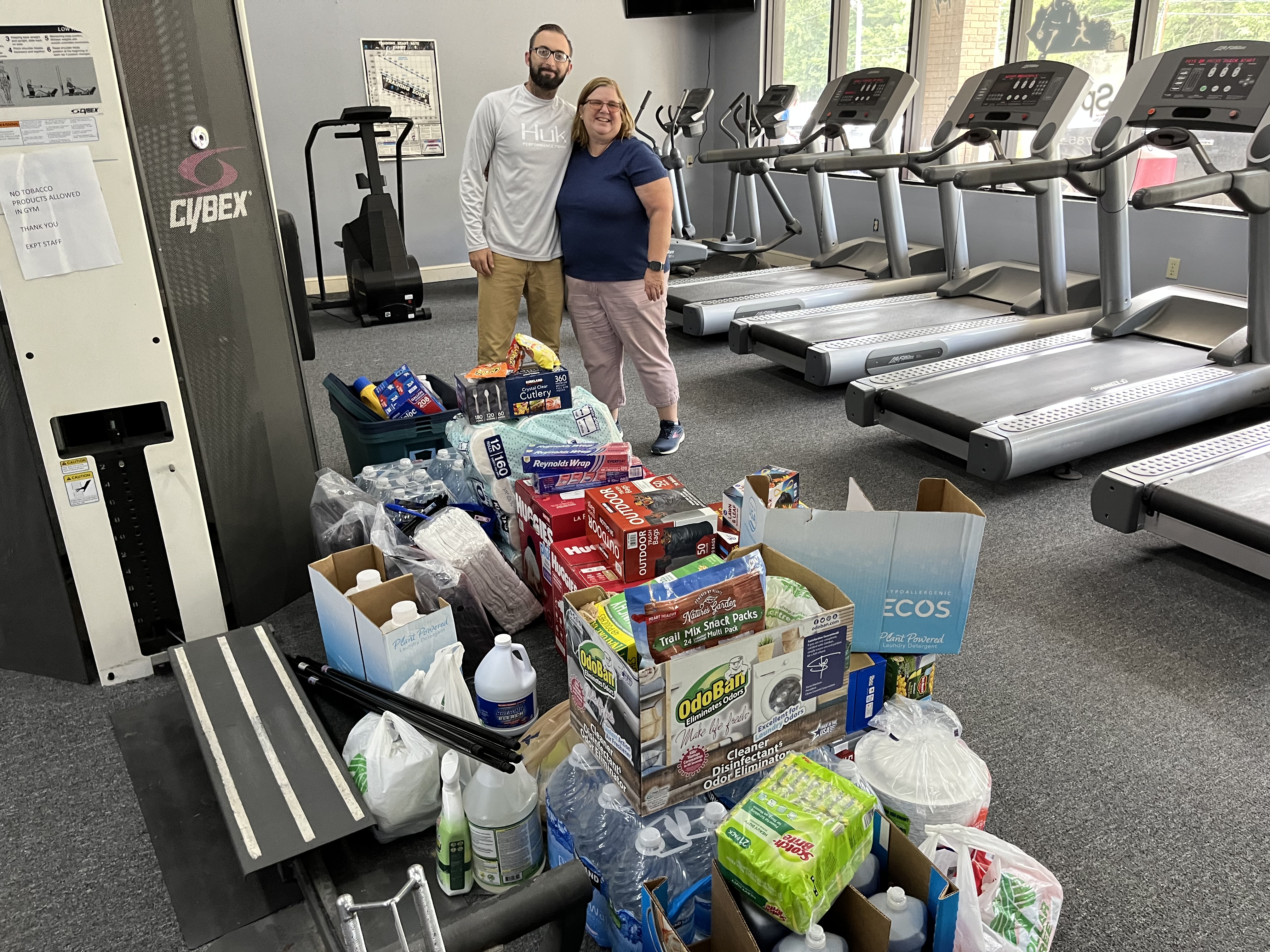The CERH Family: After the Flood (Part 3 of 3)
One Year After Flooding Killed 45 People and Displaced Thousands More, a Community Comes Back Stronger
By Ryan Clark
CHS Communications Director
HAZARD, Ky. — It became clear in the days after last year's flood that some were suffering more than others. Some struggled with no water for up to three months. Some were displaced. Some had lost family members. Mental stress was a very real concern.
One of the goals of the Center of Excellence in Rural Health in Hazard was to make certain that the students could continue their studies. And the students, in turn, kept reaching out to do what they could in the community.
“That’s the top of the list: To make sure (the students) have everything they need,” said Dr. Fran Feltner, Director of the Center of Excellence in Rural Health.
One way the Center thought to help was simple: A forever stocked food pantry.

Located in the office of Angela Phipps, an Academic Advisor at the Center, the file cabinet is filled with multiple shelves of food, everything from breakfast items to Doritos to cans of soup and ravioli.
“You never know when someone may need something,” Phipps said. “And the door is always open if someone should want to come by and get food, but they don’t want to be seen. You don’t want your students to go hungry.”
It was an idea Feltner expanded upon when she went to their partners at Hazard’s Appalachian Regional Healthcare hospital, which is located right next door. Some students were getting a discount on lunch, which is served in the hospital cafeteria. Feltner made a proposal: If all students could get the discount, she would pay for the rest — that way, they could all eat for free.
Officials at the hospital did one better: They picked up the tab on lunch, and breakfast. Since then, students can get two of their daily meals at no cost.
“We were all shocked whenever we were told that we could go get lunch for free,” said Kaleigh Clark, a second-year PT student from Hebron, Ky. “I mean, it is a hospital — it does get expensive. And for us, it just kind of takes that burden off of having to constantly buy groceries. That support they were able to provide for us — we are very grateful. Everybody’s helping out each other, regardless of the situation.”
Community Engagement
And the students haven’t stopped doing their part. On their annual Day of Service last fall, there they were, continuing to help clean up the region. Students pulled on boots and gloves and went in to scrape mold out of residents’ basements.
“One of the things I think is really good about our PT students here is that I want them to learn about community engagement before they leave — that that they will give back to the community when they leave here,” Feltner said. “For some people, you have to teach that; I haven't found that to be the case with our students here.”
On the third floor of the Center, you can find the laboratory and workspace for Project CARAT, a community outreach, service-learning program that aims to make assistive technology and durable medical equipment more accessible to those who need it in underserved areas of Kentucky.
As it turns out, after a massive flood, a lot of things get swept away, including necessary items like wheelchairs and walkers.
Project CARAT is unique in that it is a service-learning program run by the physical therapy students, who are trained to clean and refurbish durable medical equipment to distribute to those in need.
They are still doing it today.

“Walkers, wheelchairs, canes — all that durable medical equipment that’s donated in — we’re able to get back out in the community for free,” said Keisha Wells, a Rural Project Manager Senior who oversees the Appalachian Center for Assistive Technology and Project CARAT. “Immediately (after the flood), our students were like, ‘What can we do?’ They came in and spent lots of time — just to see how our students came together and did that was amazing.”
After all, there’s a reason students want to learn at the Center.
“This program always teaches us to look at the social factors that are going to impact the patient’s recovery,” said Stefany Reyes, a first-year PT student from Somerset (via Honduras). “Look at their background, where they’re coming from, and what opportunities they have, or if they have been through things like this. In general, the Hazard campus has been very helpful, a sense of community for every one of us, especially for me coming from a different country, where I don’t have a lot of family around.
“It’s nice to know that they’re going to be there if I ever need anything.”
Sometimes, the biggest lessons are taught outside of the classroom — but this one definitely had some overlap into the PT profession.
“It was just really great to kind of see that sense of community and how quickly it came about,” said Kristin Meece, a second-year PT student from Waynesburg, Ky. “It was definitely a life lesson. I think it taught me a little bit about just not taking what I have for granted and how blessed I am. It also shows me a little bit more about the level of care and compassion to have for others … just being able to talk to (patients) more than just a provider, more of a friend — someone they can trust. I think it allows us to provide better care.”

“After dealing with the Center, and seeing the students they turn out, I knew they would help,” Perry County Judge Executive Scott Alexander said. “As a county, we just want to send out a big thank-you to all of them. The biggest thing that has helped us recover and get to where we’re at is neighbor-helping-neighbor, and they’re a great example of that.”
But Alexander says the job isn’t finished. Luckily, the Center isn’t going anywhere.
“When you get here in Hazard, it’s a hidden gem,” said Ellie Hollon, a second-year PT student from Lexington. “Our professors rallied and brought a sense of home to us. I’ve had the sense of community here from the second I stepped on campus. They know your face, they know your name. They will make sure you are succeeding. They are some of your biggest supporters here. And that goes for Hazard and the region as a whole.
“When you’re here,” she continued, “you’re family.”
And when you’re family, no one gets left behind. Example one: For Feltner, there is always more to be done.
“I’m still thinking today,” Feltner said, “‘What do we do next?’”
Interested in helping rebuild eastern Kentucky?
Visit these links:
https://www.kychamber.com/resourceseasternkentuckyflooding
https://secure.kentucky.gov/FormServices/Finance/EKYFloodRelief
_______________________
Read part 1 of the story here.
Read part 2 of the story here.